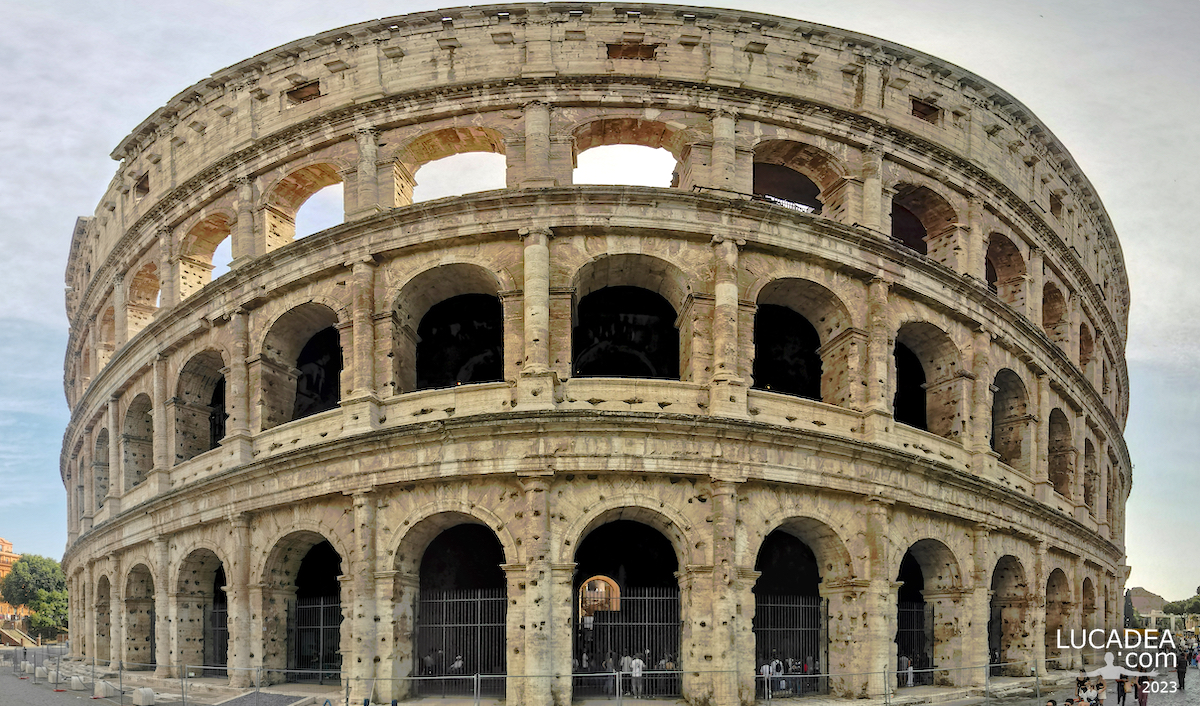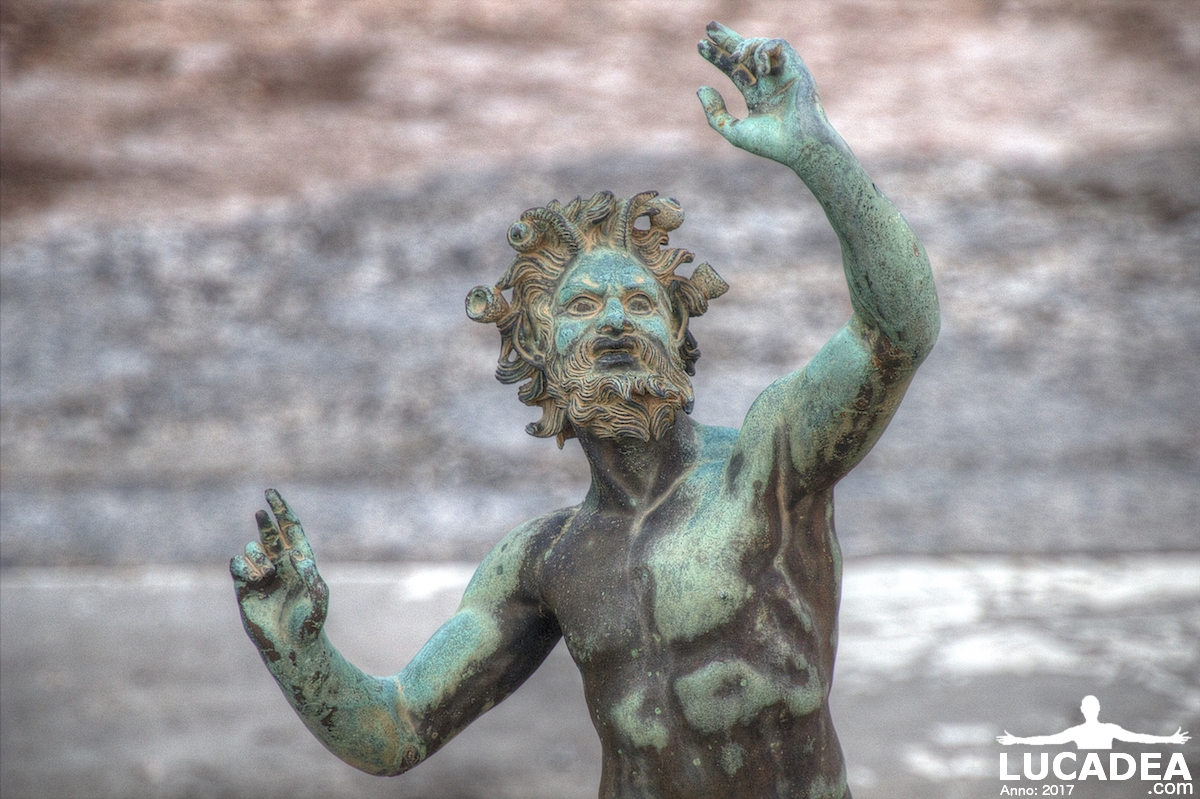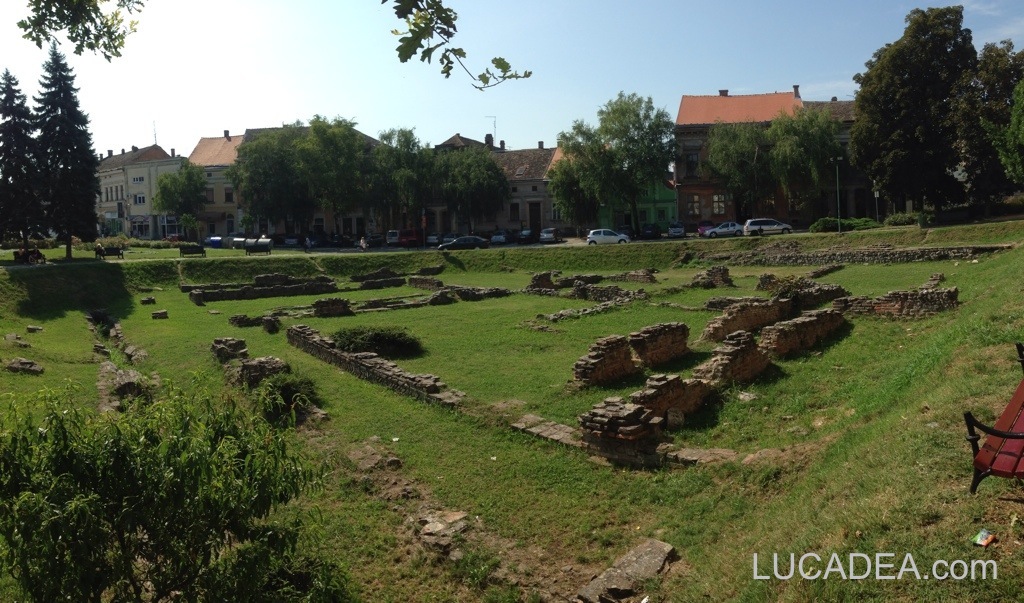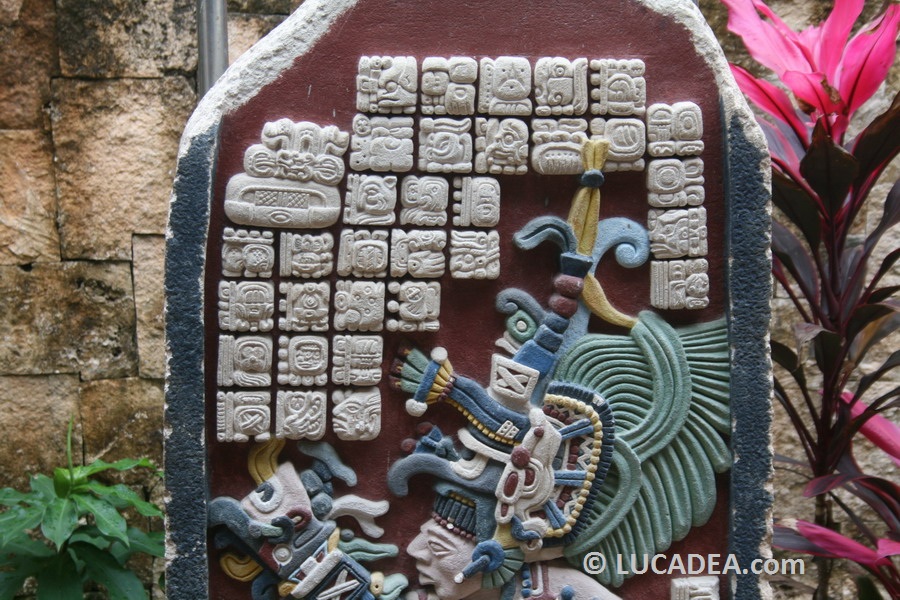The columns of the Temple of Saturn in the Roman Forum
The Temple of Saturn (Latin: Templum Saturni) was an ancient Roman temple dedicated to Saturn, the god of agriculture and wealth. It was located at the foot of the Capitoline Hill, in the western part of the Roman Forum. Its construction dates back to the 5th century BC, but the building we see today dates mainly from the period of the Roman Republic, with some modifications made over the following centuries.
The temple was known for its rich decoration and the famous statue of Saturn inside. The statue of Saturn was traditionally tied and during the Saturnalia festival, which took place in December, the rope was symbolically loosened to represent the release of restrictions.
The current structure of the temple is very partial, with only some remains of the columns and foundations. However, some original columns are still standing, giving an idea of the size and elegance of the building. The ancient part of the Temple of Saturn has been integrated with some later reconstructions, and the exact appearance of the temple has been the subject of debate among archaeologists.
Il Foro Romano, in cui si trova il Tempio di Saturno, è una delle zone archeologiche più importanti e visitate di Roma, offrendo ai visitatori una visione affascinante della vita nella Roma antica attraverso i suoi templi, basiliche, e strutture pubbliche.
Do you know the monuments of Rome? Add a comment or go to the bottom of the site to read what other visitors have written.
Photo taken with Canon EOS RP and lens Canon RF 24-50.
This is the official website of the site: colosseo.it.
Here is where the remains of the temple are located:
The Roman Forum (in Latin Forum Romanum, although the Romans more often referred to it as Forum Magnum or simply Forum) is an archaeological area of Rome enclosed between the Palatine, the Capitoline Hill, Via dei Fori Imperiali and the Colosseum, made up of the stratification of the remains of those buildings and monuments from heterogeneous eras that for much of the ancient history of Rome represented the political, legal, religious and economic centre of the city of Rome, as well as the nerve centre of the entire Roman civilisation.
Continue and learn more on Wikipedia
The columns of the Temple of Saturn in the Roman Forum – Les colonnes du Temple de Saturne dans le Forum Romain – Las columnas del Templo de Saturno en el Foro Romano – As colunas do Templo de Saturno no Fórum Romano – Die Säulen des Saturntempels im Forum Romanum – Các cột của Đền thờ Sao Thổ trong Diễn đàn La Mã – 罗马广场土星神庙的柱子 – フォロ・ロマーノのサトゥルヌス神殿の柱
The text of the post was written with the help of ChatGPT, a language model from OpenAI.












